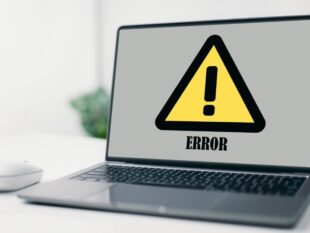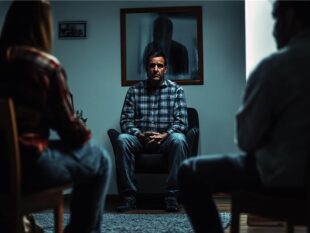Crime Narratives: Public Fear Versus Judicial Realities
by Arnab Dey Legal 24 April 2025

Fear is a potent force, shaping perceptions and narratives around crime more than any courtroom verdict or criminal statistic ever could. Public anxiety about crime often eclipses the harsher, yet quieter reality of judicial processes.
This disconnect creates debates on law enforcement approaches and legislative frameworks, frequently steering public support toward harsher punitive measures even when statistical evidence might counsel restraint.
The Persistence Of Crime Myths

Crime stories are manufactured narratives, frequently with little attention to fact. Sustaining myths regarding escalating crime, hidden predators, and widespread violence fuels a fear cycle.
An annual survey finds, year after year, that most citizens are convinced crime is increasing, despite evidence to the contrary. Mismatches between perception and truth invite a serious examination of where such stories come from.
Take the obsession with the concept of the ‘stranger danger’ when it is well known that most crimes are carried out by someone the victim knows.
Such myths endure as a result of sensationalized headlines and an endless stream of crime shows that present the world as a threatening place on the verge of collapsing under the weight of its own depravities.
In addition, these crime myths unintentionally direct public opinion towards a culture of suspicion and fear.
Since the public clings to anecdotal information rather than statistical data, community trust is lost. Neighborhood interactions become marred by suspicion, with people often stereotyped unfairly on appearance or economic status.
This unwarranted suspicion creates a climate where community cohesion is lost, paving the way for more misunderstandings and prejudices.
Role Of Media During The Crime Scare
The media doesn’t just report crime, it creates narratives that permeate the national psyche. Graphic events fill the front pages, heavy with a delicate mix of voyeurism and morality play.
Murder and violence sell, but theft, much more prevalent, gets left on the back pages. This discrepancy breeds myths, creating an image where horrific crime abounds, and theft, an accepted urban side-effect.
Ratings and entertainment override factual accuracy, causing sensationalism to be a powerful force.
With every newscast, fear seeps deeper into society’s fabric, stoking cycles of fear and disinformation. Crime reporting no longer merely informs; it enthralls and enslaves.
The repeated exposure to sensationalized crime tales produces a skewed perception of what is real, in which violence and disorder appear everywhere.
Consequently, this can give rise to increased alertness and apprehension among viewers, as they imagine crime waiting around every corner.
The powerful combination of media exaggeration and audience fear usually results in distorted public priorities, with resources disproportionately allocated to perceived threats over actual societal concerns.
One aspect commonly neglected in the midst of these stories is how bail bonds fit into the process of justice.
When people get charged, agencies such as Kissimmee bail bonds offer avenues to facilitate pre-trial release, resolving the immediate issue of incarceration while enabling defendants to be involved in their defense.
It is a reminder that not every encounter with the judicial system involves punishment and that there is scope for rehabilitation and due process.
Related Resource: 5 Things You Didn’t Know About Black-on-Black Crime
The System And Its Realities
Unlike popular perception, the legal system is a slow-moving beast with an arsenal aimed at caution rather than quick action. Prosecutors tackle backlogs, and legal proceedings are conducted at an unhurried pace, pursuing justice rather than retribution.
While the public demands quick punishment, judges operate within complex legal systems, which often results in light punishment.
The disparity between popular expectation and judicial reality usually provokes outrage. Demands for “three strikes” laws and mandatory minimums become increasingly shrill from those who confuse severity with deterrence.
Yet empirical research reveals another truth: imprisonment and punitive measures do not automatically lower crime rates.
This slow yet methodical pace ensures that all pertinent evidence and arguments are rigorously scrutinized, reducing the possibility of unfair decisions. It serves as a stern reminder that the judicial process values correctness over expediency.
This ethical commitment to justice, although not well understood, is still crucial in maintaining the integrity of the system.
However, bridging the divide between the people’s demand for instant justice and the subtle reality of judicial processes continues to be a daunting challenge.
The Unseen Effects

In spite of the deluge of crime television and news reports, it appears the public’s understanding of the judicial system is still limited.
This disconnect has systemic effects, such as biased support for politicians who vow to get “tough on crime,” which tends to result in over-policing and jamming of an already overcrowded prison system.
Imprisoning offenders hardly begins to cure the socio-economic determinants of crime. Poverty, substance abuse, and failed social systems—sources of despair that ravage lives—are pushed to the side, a whisper in the din of fear-driven rhetoric.
The ripple effects of fear-driven decision-making spread far wider than the world of law. Neighborhoods experience increased surveillance and security systems, siphoning investment from schools and welfare services.
As states spend lavishly on punitive mechanisms in place of preventative strategies, they unwittingly sacrifice chances to create environments that discourage crime before it is committed.
The misdirected investment aggravates systemic patterns of deprivation, further entrenching socioeconomic inequalities.
The Way Forward?
Challenge the story. Shed light on truth in the darkness of public opinion. Legislators, scholars, and citizens all must strive to reserve judgment against facts, not theatrics. Prioritize prevention, education, and closing inequalities that set the stage for crime.
The public must elevate itself beyond the automatic association of fear and punishment and begin the passage toward genuine reform.
Focusing instead on rehabilitation and reintegration of the criminal, and recognizing the contribution of economic and social programs, may very well produce the outcomes the citizenry desires.
Set reality to what is seen, not perceived. Only then will society be able to reconcile its frightening stories with judicial realities and create a balanced understanding of crime and its multifaceted contexts.
Read Also:



































































































